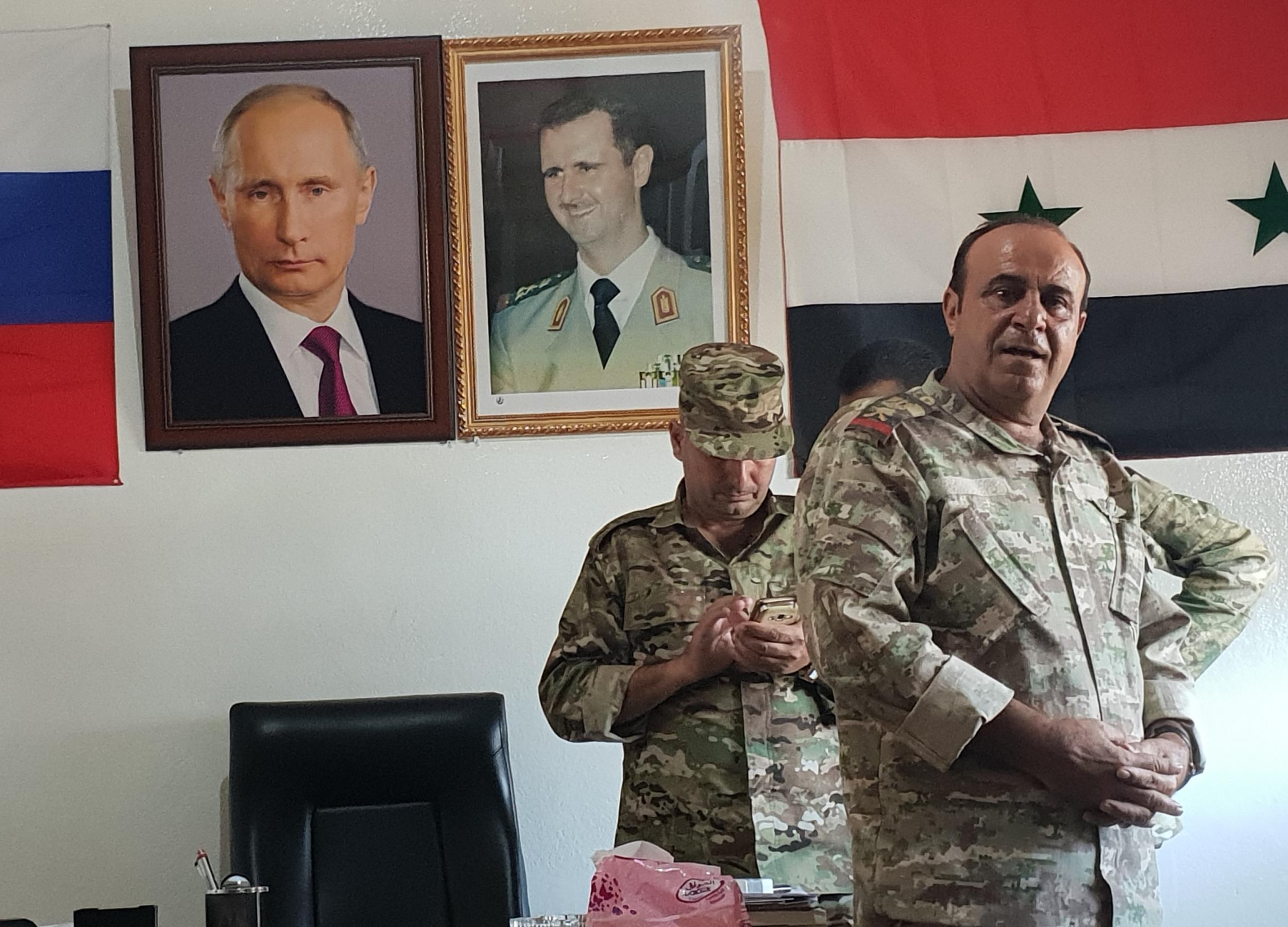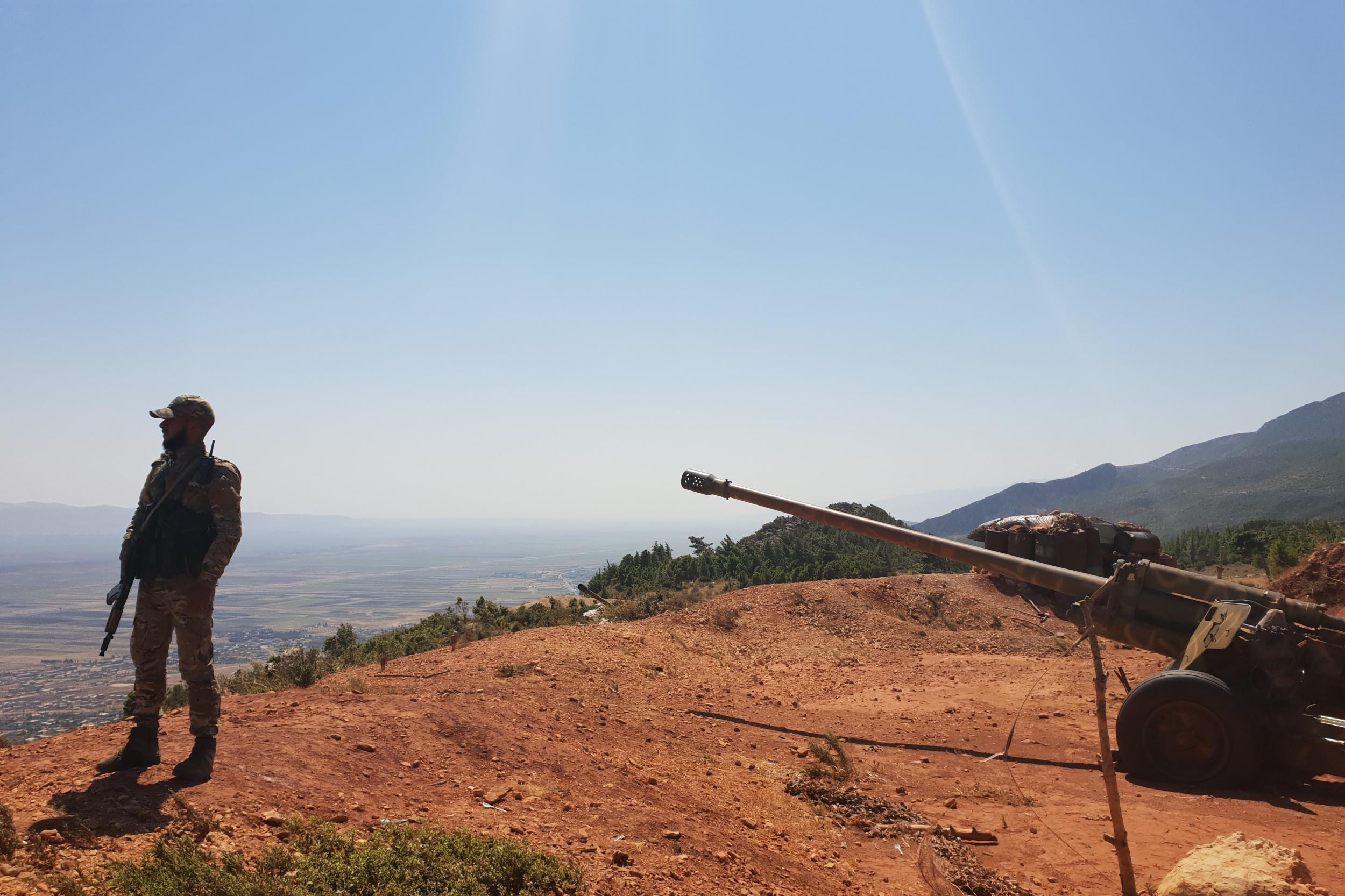When the battle for Idlib is over, where will the fighters who have sworn never to surrender go next?
The Syrian army was trained to fight in hills – for the final battle for Israeli-occupied Golan, rather than the final battle for Nusrah-held Idlib. Golan is presumably still to come

Your support helps us to tell the story
From reproductive rights to climate change to Big Tech, The Independent is on the ground when the story is developing. Whether it's investigating the financials of Elon Musk's pro-Trump PAC or producing our latest documentary, 'The A Word', which shines a light on the American women fighting for reproductive rights, we know how important it is to parse out the facts from the messaging.
At such a critical moment in US history, we need reporters on the ground. Your donation allows us to keep sending journalists to speak to both sides of the story.
The Independent is trusted by Americans across the entire political spectrum. And unlike many other quality news outlets, we choose not to lock Americans out of our reporting and analysis with paywalls. We believe quality journalism should be available to everyone, paid for by those who can afford it.
Your support makes all the difference.Wars are dodgy things to predict. And the vast plain below the battlefield of Idlib – not to mention the Syrian artillery battery of four 130mm guns on the heights of Mount Akrad pointing at the hot fields and deserted villages held by the Islamists to the east – bake under the white sun in silence. In the dank tributary canals of the river below, herds of black-and-white cows stand beneath the trees. A little towards the main road, Syrian soldiers rest under the bushes. A clutch of T-72 tanks are parked, hull down in the earth, beneath the branches.
Is that it, I ask myself, as I drive north towards the much-signposted town of Jisr al-Chougour? It’s still in the hands of Nusrah, but only 10 miles away – you grow used to wars in which the road signs constantly point you to locations on the wrong side of front lines – and the idea that this ancient countryside with its old stone houses and the green drift of the Orontes is about to become the site of the last and final battle of the Syrian war seems strangely out of place.
Are the Syrians going to pour forth from the basin of the Orontes – Strabo and Dionysus’s Orontes, the Asi river in Arabic – and lay waste to the province of Idlib which has long been the dumping ground for Syria’s enemies, the Nusrah fighters and Isis and the other jihadis who refused to give up when they evacuated the big Syrian cities?
The Islamists sent a silver-painted drone over the Syrian lines a few hours before I arrived, brought down by rifle fire. Painted on the wing by Nusrah were the words: “If you receive this message, there is worse to come” and it was signed “Tariq bin Ziad from Andalusia”. It had three tiny rockets strapped to the wings. Tariq bin Ziad was the 8th century Umayyad conqueror of Spanish Andalusia. Yes, history lies heavily on you in these parts.
But back to the present. Is this really about to be the “Berlin ’45” of this vast tragedy? The scene of “unprecedented” human loss, as the UN fears? The “massacre” of which Erdogan warns? The “wreckless” advance into Idlib of which Trump roars? The final “lancing of the abscess of terrorism” of which Sergei Lavrov talks – in full Israel-speak, I might add, for that is the language Israel uses about Hamas in Gaza? Lavrov has become quite a “terrorist” expert as we head towards this particular armageddon – always supposing armageddon actually happens.
I guess you have to be a bit of a detective when you drive around these roads and laneways and up into the foothills where General Jihad Sultan’s guns are dug in behind their earth revetments. The Islamists must have drone-photographed these mountainsides many times (and so must US satellites) and the Russians know them perfectly well because they are Syria’s allies. These guns are not for show. They fired this very morning after rockets were reportedly aimed at the Syrians. But where were the legions of ground troops, the massed armour for the great advance? Plenty of villagers close behind the Syrian lines, sitting in coffee shops, driving cattle into the fields, hanging out washing on fences.
Hours after I left Jourine, a spray of rockets and missiles were fired by Islamist rebels onto the Syrian front lines, exploding across the town. The attack was short – the second in a week – and clearly intended to provoke the Syrian army. Since the usual suspects – the armed opposition in Jisr al-Chougour – can’t be arrested, they can, I suppose, expect the usual shellfire.

One of the first things I notice in General Sultan’s office – he holds the title of commander of the Idlib security committee, although we are still (just) in the province of Hama rather than in the province of Idlib – are two large photographs above his desk of Presidents Bashar al-Assad and Vladimir Putin. Two equally large Syrian and Russian flags flank the coloured portraits. This may not be a joint Russian-Syrian operation on the ground – I saw one Russian military police vehicle on my whole drive up from Hama – but in the air it surely will be, if it happens. General Sultan, who was a tank lieutenant at the Lebanese battle of Sultan Yakoub during the 1982 Israeli invasion, talks of “our Russian friends”, and insists to me that “from zero hour, it will take me seven days to be inside Jisr al-Shugour”.
The town was evacuated under fire by the Syrian army in 2015, its soldiers shot down by Nusrah firing squads beside the Orontes while their comrades fought their way out with as many civilians as could flee. Nusrah also killed families – there is no doubt about this particular bloodbath (it was a retreat) at the time; I interviewed the wounded survivors myself – and it may have been the catalyst for Russia’s arrival in support of the Assad regime a few months later. So this little town, which I can actually see through the heat haze with binoculars, has scores to settle.
General Sultan, a short-haired pointy-headed man who has been in the Orontes basin for three years, claims he has many “helpers” in Idlib province who send him information about opposition fighters and weapons. He produces a mobile phone. “One of them sent me this picture,” he says. It shows a number of men erecting what appears to be a large iron gallows, apparently in the town of Maarat el-Numan, now held by Nusrah, though fought over many times, bombed by Syrians and Russians and bathed, too, in the blood of history. In this town, the Crusaders themselves wrote of how, travelling down from Antioch (Antakya), they were starving and forced to eat the bodies of their Muslim Saracen opponents.
And – yes, one has to keep saying this – back to the present. Above a group of General Sultan’s officers, who are tapping away on black laptops, is a laminated operations map of the entire peninsula of opposition territory as it bulges down the Orontes, detailed and, of course, in Arabic, dozens of Syrian and Nusrah positions marked off along the front lines.
Syria is coloured red. Nusrah and its allies are marked in black. Moving around these lines – and up northwest of Lattakia and southwest of Aleppo – are Syria’s top generals, including the ruthless commander whom every Syrian calls “The Tiger”; and there is one-legged General Saleh, victim of a landmine east of Aleppo, and the general whose men call him “Caesar” after his battle with Isis east of Hama last year.
But these commanders don’t go in for head-on attacks. Their proven tactics are the old “salami” routine of nipping off a bit of territory here, straightening a front line there, gobbling up a village or two after the opposition have fled. Could the last big battle of Idlib turn out to be a rather slower affair than the world’s politicians – and editors – imagine?

Plenty of time for Russian-Turkish talks, Russian-American talks, lots of hours of local “reconciliation” meetings between Syrian opposition fighters and the Syrian army – with the Russians present, for this is just what happened so many times in Homs and Damascus and Deraa. In Deraa, indeed, there are today villages nominally under government control, yet still patrolled by armed non-government forces with government acquiescence under a complex ceasefire agreement.
But where will all the fighters, who have sworn never to surrender, go to next? This is the question. When they surrendered their bastions in the big Syrian cities, they were all bussed to the Islamist dustbin of Idlib. There is a land corridor between Idlib and the Turkish frontier – and there are Turkish military “de-escalation” posts inside Idlib – the 12 scarcely twelve miles from General Sultan’s headquarters. The Syrians can stay but the foreigners must leave, Sultan insists – this is the standard line – but who will take the foreigners back? I doubt if Vladimir Putin, staring down from the wall in Sultan’s office with those pale blue, unsmiling eyes, is going to welcome the Chechens back to Chechenya. Nor Turkmenistan the Turkmens. Nor Uzbekistan the Uzbeks. What of them and those others who decide to fight on amid the civilians of Idlib?
So this doesn’t mean that Idlib will end with a whimper. The bowl of sky above Jisr el-Chougour was empty when I looked across the plains of the Orontes but a day earlier, there had been several Syrian air raids. The opposition claimed 10 civilians dead – they rarely mention militia casualties – but there are also families of government soldiers among the tens of thousands of civilians in Idlib province. General Sultan’s thesis – and you can stare across at the grey, battered and empty villages on the Nusrah side of the line and search in vain for a single human being – is that foreign Islamist fighters have put their own families in Jisr el-Chugour, a dangerous undertaking for the opposition, if true.
He talks very freely about the soldiers who deserted the Syrian army in the early days of the war – and of how many returned to the ranks. He speaks of the poverty which drove men to join the opposition. “Then by 2015, they realised theirs was not a fight for democracy and human rights. And our friends from the Russian Federation supported us with suitable weapons as Syria fought on.”
He agrees that the Syrian army was trained to fight in hills – for the final battle for Israeli-occupied Golan, rather than the final battle for Nusrah-held Idlib. And Idlib is obviously in the opposite direction to Golan, as he agrees. Golan is therefore presumably still to come.
And that is another story.
